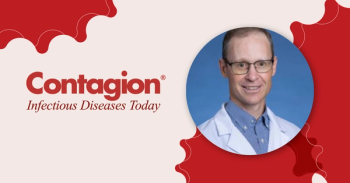
Cure Hepatitis C Act 2025: US Strategy to End Hepatitis C
Through the bipartisan Cure Hepatitis C Act of 2025, legislation seeks to provide nationwide hepatitis C treatment and strengthen public health infrastructure by expanding testing, treatment, and prevention through a subscription-based model.
On June 4, 2025, US Senators Bill Cassidy (LA) and Chris Van Hollen (MD) introduced S.1941, the Cure Hepatitis C Act of 2025, a bipartisan proposal to codify federal efforts aimed at eliminating
Treatment Access & Subscription Model
A central feature of S.1941 is a subscription purchasing model for direct-acting antivirals (DAAs), in which HHS negotiates with manufacturers to secure a supply of curative HCV therapies for a fixed annual payment. Participating states, the Indian Health Service, federal correctional systems, and other entities would receive the medications without cost-sharing, and the bill also removes prior authorization requirements for Medicaid populations and incarcerated individuals (in participating jurisdictions) while waiving cost-sharing for Medicare beneficiaries.2
Advocacy groups and professional societies have welcomed the proposal. The American Association for the Study of Liver Diseases (AASLD) supports the legislation through its HCV Elimination Coalition, highlighting its scalable, fiscally responsible path to reduce HCV burden and long-term healthcare costs. The American Society of Addiction Medicine (ASAM) also endorsed the bill for its potential to integrate HCV test-to-treat strategies among persons with substance use disorders.2
On September 2, 2025, the AAMC and 101 other organizations sent a letter to Congress urging inclusion of S.1941 in upcoming health legislation. The bill would allocate nearly $10 billion through 2031 to expand hepatitis C testing, treatment, and prevention infrastructure, emphasizing that effective oral cures already exist and calling for greater access through community health centers, correctional facilities, and opioid treatment programs.3
Public Health Infrastructure & Reporting Mandates
Beyond treatment provision, S.1941 mandates expanded investment in diagnostics, screening, and public health infrastructure. The bill authorizes funding for grants at the state and local levels to support HCV testing, linkage to care, support services, and integration into existing health programs like opioid treatment centers, and community health centers.4
The legislation would require annual reporting to Congress through 2032, and the creation of a publicly accessible dashboard tracking key metrics. It also authorizes up to $20 million for development of point-of-care diagnostics for HCV (and HBV) to streamline detection and linkage to therapy.4
Check out this previous interview with Jason Haukoos, MD, who discusses the DETECT Hep C trial.
Challenges & Considerations for Clinicians and Policy Makers
According to the World Health Organization’s Global Health Sector Strategy on Viral Hepatitis 2022–2030, achieving hepatitis C elimination requires not only access to curative therapies but also sustained investment in diagnostics, linkage to care, and equitable service delivery.4 While S.1941 presents a highly ambitious framework, several key challenges will warrant attention:
- State Participation and Adoption: Because participation in the proposed subscription and access programs is voluntary, the success of S.1941 will depend heavily on engagement from states and correctional health systems.
- Equity and Access: Ensuring that high-risk and underserved populations, such as rural, uninsured, and justice-involved individuals, can benefit from expanded treatment will require intentional implementation and outreach strategies aligned with WHO equity principles.
- Diagnostic and Linkage Barriers: Without widespread screening and accessible point-of-care diagnostics, many individuals with HCV may remain undiagnosed or unlinked to therapy, undermining elimination targets.
- Sustainability and Funding: The long-term viability of a fixed-payment model will hinge on sustainable pricing negotiations, continued federal investment, and coordinated public health infrastructure.
- Legislative Momentum: As of October 2025, S.1941 remains under review in the Senate Health, Education, Labor, and Pensions (HELP) Committee.
Overall, if enacted, S.1941 could place the US on a path toward hepatitis C elimination, though success will depend on sustained funding, diagnostics, and state-level participation.
References
1. S.1941 - Cure Hepatitis C Act of 2025. June 4, 2025. Accessed October 7, 2025. https://www.congress.gov/bill/119th-congress/senate-bill/1941/text#:~:text=Introduced%20in%20Senate%20(06/04,3)%20INDIAN%20HEALTH%20PROGRAM
2. Press release.Cassidy B. Cassidy, Van Hollen Introduce Bipartisan Cure Hepatitis C Act. U.S. Senate Press Releases. May 14, 2025. Accessed October 7, 2025. https://www.cassidy.senate.gov/newsroom/press-releases/cassidy-van-hollen-introduce-life-saving-hepatitis-c-legislation/
3.American Medical Colleges Association. AAMC Joins Health Groups Urging Congress to Pass Cure Hepatitis C Act. September 5, 2025. Accessed October 6, 2025.https://www.aamc.org/advocacy-policy/washington-highlights/aamc-joins-health-groups-urging-congress-pass-cure-hepatitis-c-act
4. World Health Organization. Global Health Sector Strategy on Viral Hepatitis 2022–2030. Geneva: World Health Organization. July 18, 2022. Accessed October 7, 2025. https://www.who.int/teams/global-hiv-hepatitis-and-stis-programmes/strategies/global-health-sector-strategies
Newsletter
Stay ahead of emerging infectious disease threats with expert insights and breaking research. Subscribe now to get updates delivered straight to your inbox.



























































































































































































































































































